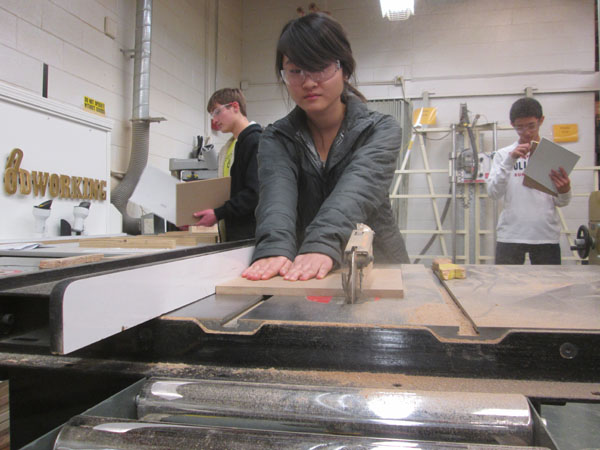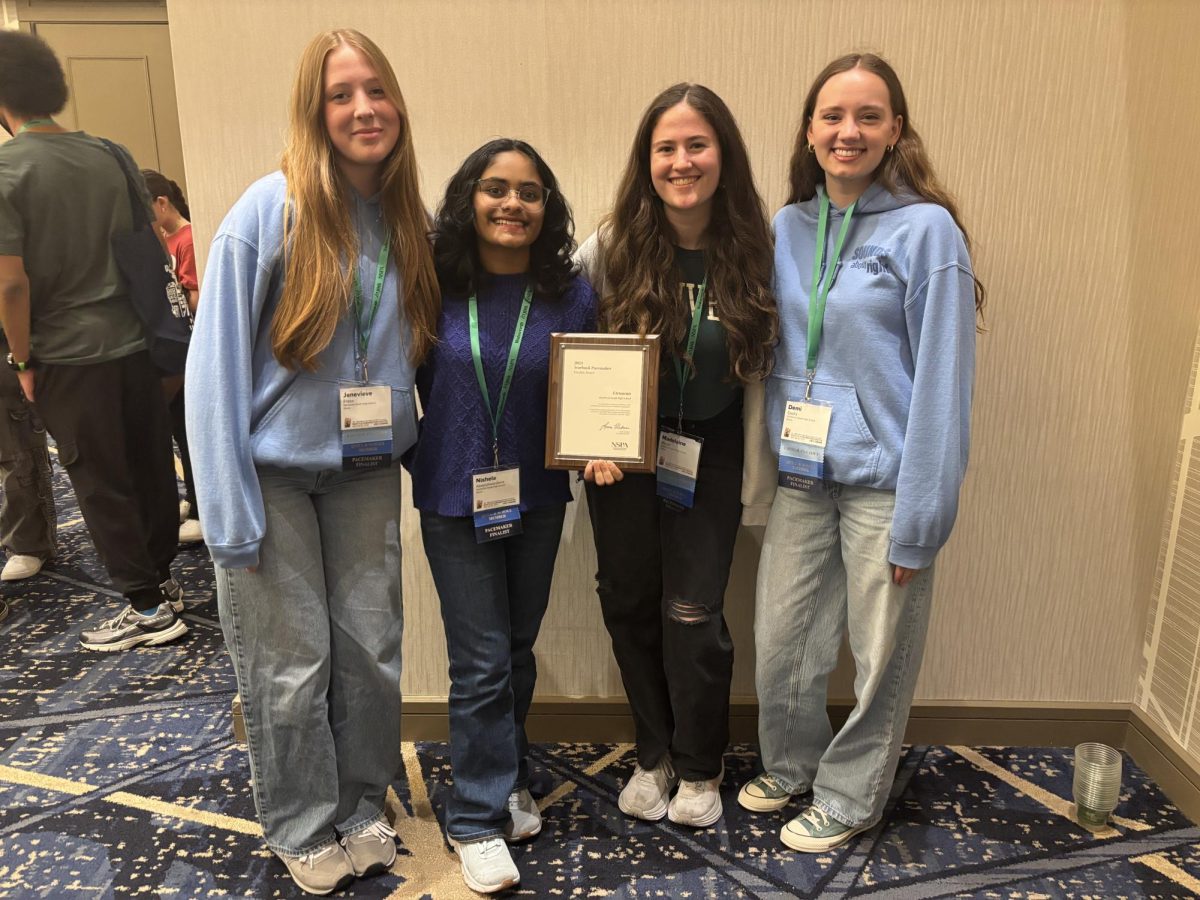South’s chapter of Project Lead The Way (PLTW) is increasing its course offerings for the 2014-2015 school year with the addition of two new courses, two new classrooms and a new four year program.
PLTW is a nation-wide initiative that began at South this year to expand engineering and technology options. This year, two introductory classes –Introduction to Engineering Design and Principles of Engineering– were offered with over 200 South students registered for the classes.
Jeff Rylander, instructional supervisor of the Science Department, said the program was introduced to meet growing interest in STEM (Science, Technology, Engineering and Mathematics) fields.
“Nine out of 10 of the fastest growing jobs that require a bachelor’s degree are in STEM fields,” Rylander said. “So [teachers] feel that there’s a need […] that we prepare students in these areas.”
Adding New Classes
Two new courses, Civil Engineering & Architecture and Engineering Design & Development, will be added to the PLTW sequence, according to Dawn Hall, instructional supervisor for the Applied Technology Department.
Engineering Design & Development is the final course for the PLTW sequence, according to Hall. It is designed primarily for students to research and find solutions to engineering problems.
“[Engineering Design & Development is] the one we’re extremely excited about as students […] can culminate in this course, [which] is a project-based, research-based, engineering design course,” Hall said. “They will propose a solution to a real world problem, they will work with industry professionals, they will get feedback […], [like] what [college] students are doing.”
Hall believes this class will distinguish South students from other prospective engineering majors in college because students will have the skills real engineers need, like working with necessary tools and technology.
“We brought [Engineering Design & Development] in for our upperclassmen,” Hall said. “They’re going to go on into this field, declare engineering as a major, and we want them to have that portfolio opportunity.”
Junior Luke Chirayil plans to take Engineering Design & Development to strengthen his future career opportunities.
“I want to go into engineering in the future, and since the school offers these great […] programs, I might as well take advantage of [them],” Chirayil said.
Civil Engineering & Architecture, however, is a more specialized class for students interested in pursuing additional Architecture opportunities.
Students would design residential and commercial projects and use 3D architecture software, according to PLTW.org.
This summer, South will add two more PLTW classrooms to the applied technology wing, according to South Principal Dr. Brian Wegley.
“They’re redoing the classes to have the space so there will be a work area, a production lab area and then two computer areas where students can work,” Wegley said.
Even in the current room, there wasn’t enough space for the first year to accommodate the large enrollment in these classes, according to Wegley. One of the classes is taught in the keyboarding lab, which Wegley said is not the ideal location.
“[The new rooms are] simply because the program as it is has grown, and we’re going to create two PLTW classrooms, but those are going to fill up in a hurry,” Wegley said.
The PLTW and Computer-Aided Drafting (CAD) classes will be held in the two classrooms, which will both connect to the fabrication lab with equipment like 3D printers, according to Hall.
STEM Learning Community
The Science, Mathematics and Applied Technology Departments have created a new learning environment, the STEM Learning Community. The STEM Learning Community is a four-year study program that will accept 48 incoming freshmen, according to Rylander.
“It’s an integrated program of study for our students who are perhaps considering a STEM career in their future,” Rylander said. “Some have likened it to what Academy is for humanities classes.”
Freshmen will begin by taking Introduction to Engineering Design Honors, Physics Honors and an honors math class. This science sequence will be different from that of most other freshmen, who will take biology, according to Rylander. PLTW teacher Michael Sinde, who teaches Introduction to Engineering Design, said this will allow the students to go deeper into the curriculum.
“The difference is you’re going to have continued [coordination] with science where we don’t currently have that as much,” Sinde said. “So we have overlap, [we can] reinforce certain concepts [and] go deeper and wider into different projects.”
Looking Forward
Hall and the Applied Technology Department are continuing to look to PLTW in the future for more courses and greater coordination with North once they finish implementing their program.
Another PLTW class, Digital Electronics, is scheduled to be added to the PLTW sequence in the 2015-2016 school year, according to Hall. The class is the third course in the PLTW sequence after Introduction to Engineering Design and Principles of Engineering.
Students will study circuit construction and electronics design in Digital Electronics, according to PLTW.org.
“We didn’t bring [Digital Electronics in 2014-2015] because our students aren’t there,” Hall said. “We kind of jumped sequence a little bit. It used to be one of the foundation classes because everything’s digital and every student needs that, and that’s extremely important [for the future].”
Hall said there is the potential to collaborate with North, which will be starting PLTW in the 2014-2015 school year. North can offer a different class, Computer Integrated Manufacturing, because of their facilities.
“We’d have to build a space to offer [Computer Integrated Manufacturing] or add on to our space, and that just doesn’t make sense,” Hall said. “Now that we’re on the same schedule, we think there might be [additional] opportunities. Students might travel here for digital and travel to North for computer integrated manufacturing.”






